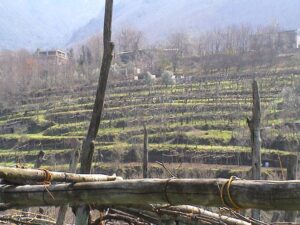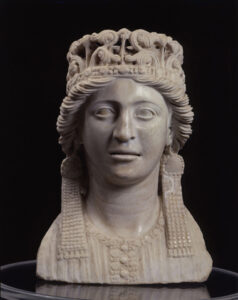MUNICIPALITY: Scala
NAME: Tower of the Ziro
LOCATIONON: Loc. Pontone
DESCRIPTION: On the spur of rock that juts out toward the sea, between Atrani and Amalfi, stands the tower of the Ziro, with a narrow walkway, surrounded by crenellated walls, that connects it to the extreme point of the esplanade.
As shown now the tower has all the elements of defensive works of the Angevin period; it is a cylindrical construction with a scarp base and a projecting torus at the impost of the cylinder on the base. The crowning must have had battlements, some elements of which survive; the only openings are above the cornice, a larger one that must have served as an entrance, and the others smaller (four square window compartments).
The earliest records of this tower date back to 1151, when it was still called “Rocca di S. Felice,” while from 1292 it became Turris cziri.
A well-known story is associated with this structure among the locals: it is said that the tower was used as a place of imprisonment for Giovanna d’Aragona. Married very young to Alfonso Piccolomini, duke of Amalfi, at about twenty years old she became a widow, and started a love affair with her administrator (servant) Antonio Bologna, whom she later married in secret and by whom she had children. When her two brothers, the Cardinal Carlo and Federico, found out about it, they showed their dissent by trying to split up the two lovers. They fled but they were caught, Antonio Bologna was killed and Giovanna d’Aragona was taken back to Amalfi where she disappeared.
The story, which took place in the 1500s, is a true event, recounted among many others by Matteo Bandello in his novelle, who was an eyewitness to the affair because he was Bologna’s friend; then it was even transposed into the form of a tragedy by John Webster, in the 16th century. However, he concludes the affair with Giovanna’s murder by a hitman, Bosola.
Instead, local tradition says that Giovanna, brought back to Amalfi, was locked up in the Tower of Ziro and walled up alive together with her children, the fruit of her secret love; the proof of this conclusion lies, according to vox populi, in the absence of doors in the tower.
SEE, VISIT, FIND: The tower can be visited from the outside.
FRUITION DATA: None
OPPORTUNITIES: The site should be marked by a succession of directions so that the route is easily recognizable (a very pleasant walk, moreover). The tower should also be described and presented through panels, with reference also to the legend of Joan of Aragon.
BIBLIOGRAPHY: CAMERA M., Memorie storico – diplomatiche: città e ducato di Amalfi, Salerno 1881




